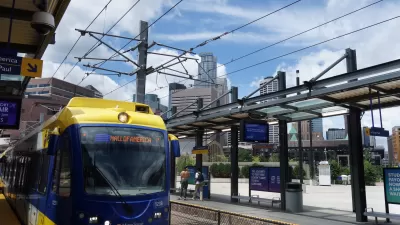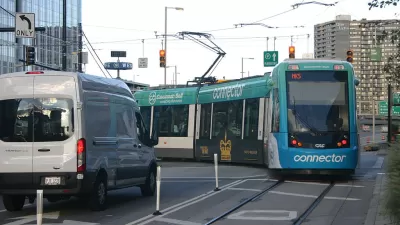The Minnesota State Legislature recently approved one of the most significant funding bills ever devoted to transit at the state level. The bill required rare political alignment and a new brand of advocacy.

The Minnesota State Legislature approved HF 2887 in May 2023, in effect adopting a transportation omnibus bill with $2 billion for public transit programs included in $9 billion total for transportation funds. Notably, the bill created several new funding sources, like a local sales tax, a gas tax indexed to inflation, a retail delivery fee, and a new sales tax on motor vehicles. Projects funded by the bill will include an intercity rail route between the Twin Cities and Duluth, an extension of the Blue Line light rail route between downtown Minneapolis and Brooklyn Park, and more.
The story of how the bill was approved provides a model advocates around the country, especially those operating in states with a Democratic trifecta in the governor’s office and the two houses of the legislature.
According to an article published by TransitCenter, the motivation for Minnesota legislators to approve the historic transportation bill came from not wanting to repeat a similar failure the last time Democrats held a trifecta—ten years ago. Further, the advocates quoted in the article from the Move MN, Sierra Club North Star Chapter, ISAIAH, and—all members of the Transportation Forward coalition—describe how HF 2887 was able to build support as a climate bill. Further aligning the stars for the coalition was the quick success of a 100 percent clean energy bill adopted in February and a ten-year effort to test transportation legislation and build to the historic moment.
More details of the advocacy coalition that achieved the success, and how it might provide a model for advocates in other states to achieve similar victories for transit and the climate.
FULL STORY: How Transit Advocates Scored a Major Victory in Minnesota

Alabama: Trump Terminates Settlements for Black Communities Harmed By Raw Sewage
Trump deemed the landmark civil rights agreement “illegal DEI and environmental justice policy.”

Study: Maui’s Plan to Convert Vacation Rentals to Long-Term Housing Could Cause Nearly $1 Billion Economic Loss
The plan would reduce visitor accommodation by 25% resulting in 1,900 jobs lost.

Why Should We Subsidize Public Transportation?
Many public transit agencies face financial stress due to rising costs, declining fare revenue, and declining subsidies. Transit advocates must provide a strong business case for increasing public transit funding.

Paris Bike Boom Leads to Steep Drop in Air Pollution
The French city’s air quality has improved dramatically in the past 20 years, coinciding with a growth in cycling.

Why Housing Costs More to Build in California Than in Texas
Hard costs like labor and materials combined with ‘soft’ costs such as permitting make building in the San Francisco Bay Area almost three times as costly as in Texas cities.

San Diego County Sees a Rise in Urban Coyotes
San Diego County experiences a rise in urban coyotes, as sightings become prevalent throughout its urban neighbourhoods and surrounding areas.
Urban Design for Planners 1: Software Tools
This six-course series explores essential urban design concepts using open source software and equips planners with the tools they need to participate fully in the urban design process.
Planning for Universal Design
Learn the tools for implementing Universal Design in planning regulations.
Smith Gee Studio
Alamo Area Metropolitan Planning Organization
City of Santa Clarita
Institute for Housing and Urban Development Studies (IHS)
City of Grandview
Harvard GSD Executive Education
Toledo-Lucas County Plan Commissions
Salt Lake City
NYU Wagner Graduate School of Public Service





























